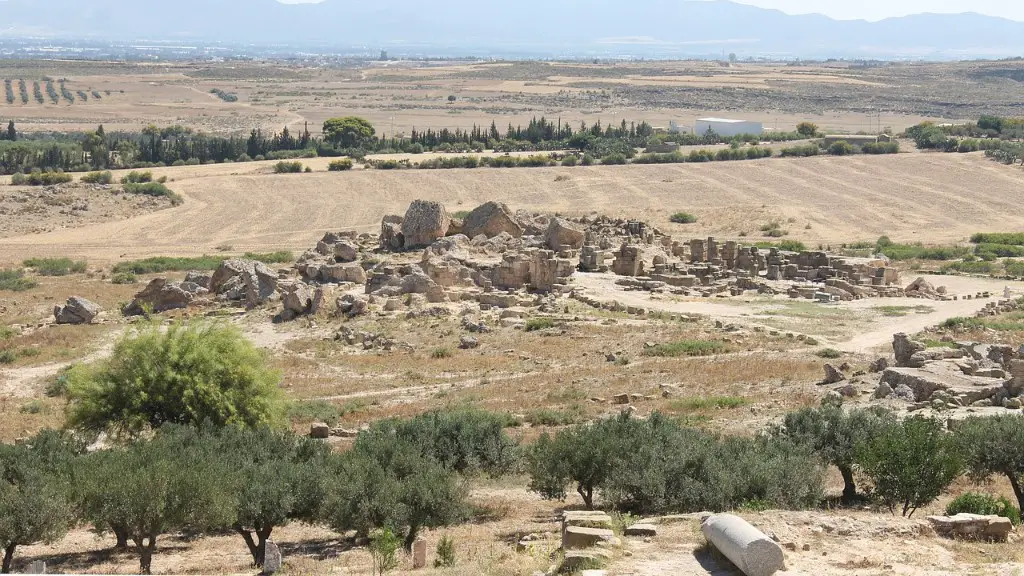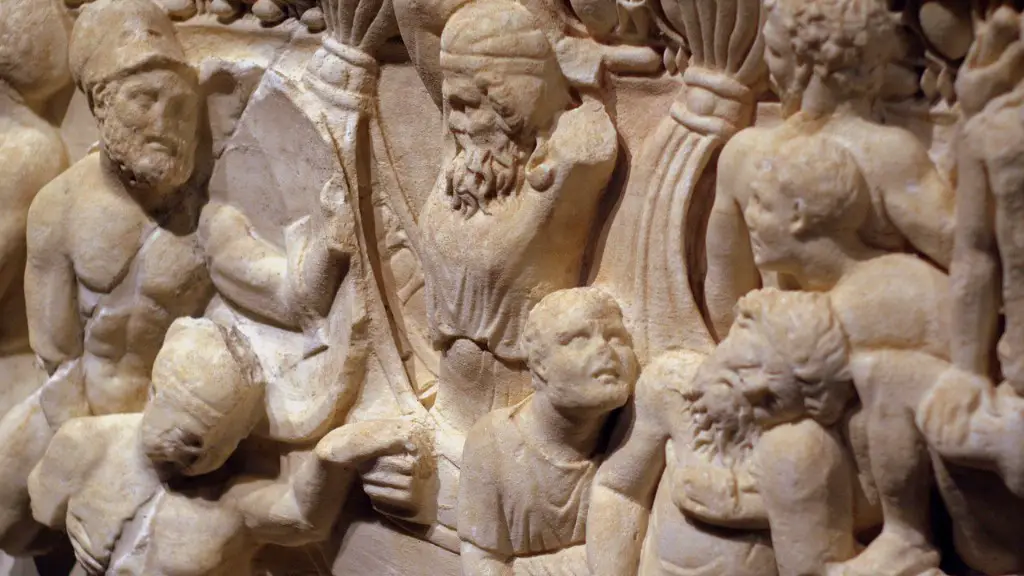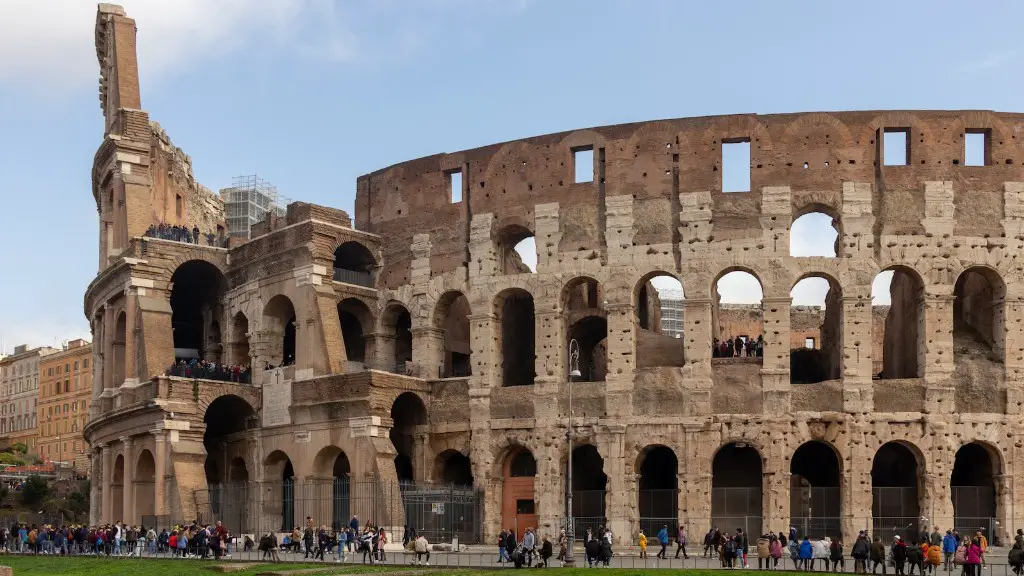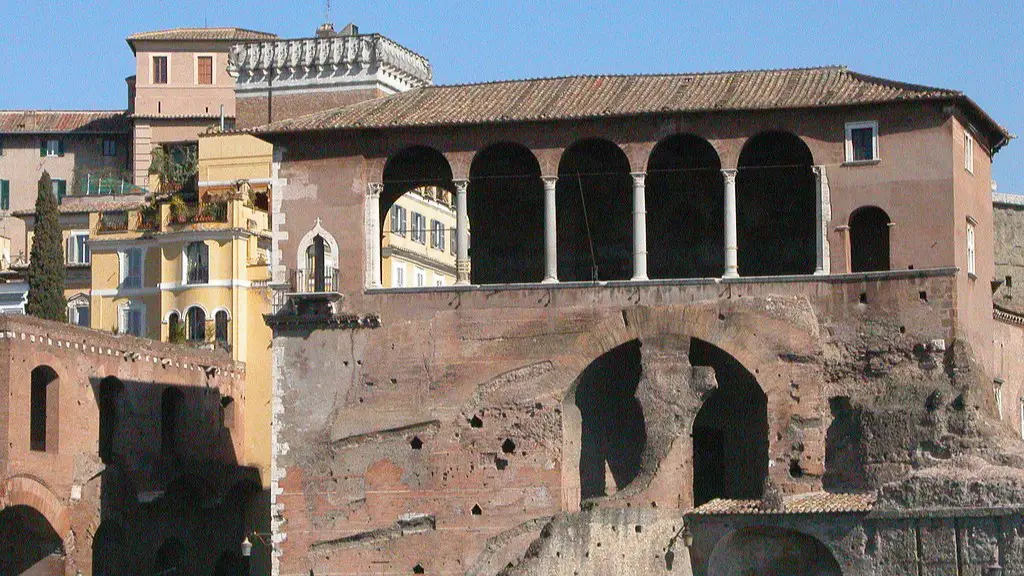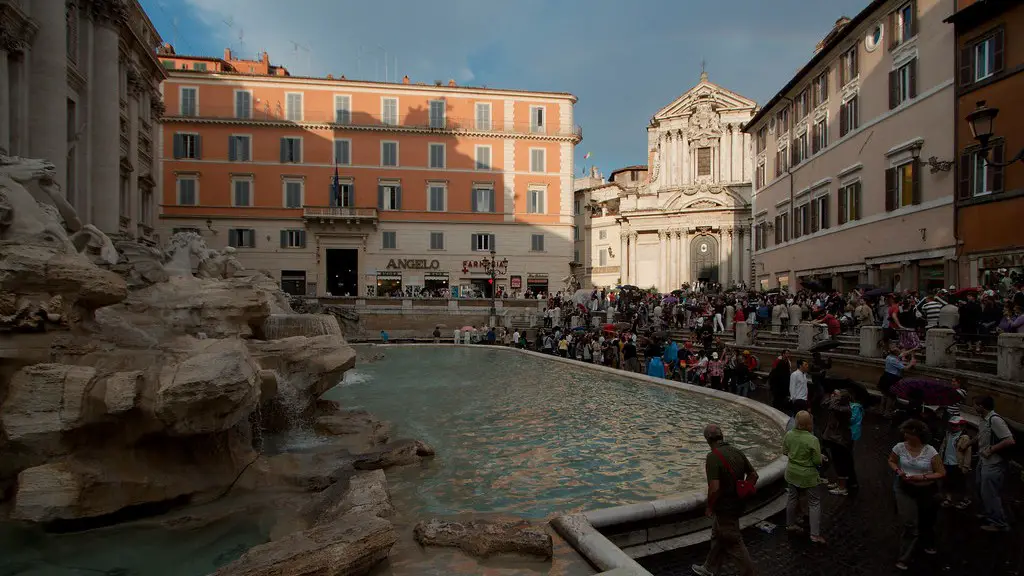Why Was Ancient Rome So Amazing?
Ancient Rome was a city-state known for its great achievements, power, and militaristic prowess. It was a powerful capital for the Roman Empire and was also a major contributor to the ancient world. Rome was a larger-than-life cultural, artistic, and political center, with great praise from its citizens and onlookers from all over the world.
Ancient Rome’s economy was mainly based on agriculture and trading, along with an impressive surplus of military forces. The Roman Empire was able to conquer much of Europe, North Africa, and Asia Minor due to its strong military. In addition to its strong military, Rome was able to establish many colonies throughout their Empire.
Rome was also known to be a great center of engineering, construction, and art. It is believed that the Romans were the first to build roads, aqueducts, and sewers. These feats of engineering helped to bring prosperity and convenience to its citizens. Rome was also known for its architectural masterpieces, such as the Pantheon, the Colosseum, and the Roman Forum.
To this day, historians are still fascinated by ancient Rome’s rich culture and heritage. Historians point to the high level of civic life, vibrant culture, and impressive infrastructure as reasons for its success and longevity. Historians also recognize Rome’s exceptional adaptation skills as a key factor in its success – it was able to absorb foreign influences, cultures, religions, and beliefs, which helped make it a great center of learning.
In addition, Rome had a strong system of government, with its ruling class consisting of the Senate, Emperors, and Army commanders. This system was conducive to the creation of law and order and the establishment of a bureaucracy. The Roman people were known for their social mobility, which allowed people from the lower tiers of society to ascend to positions of prestige.
Ancient Rome had a complex religion as well, with many Roman gods and goddesses, who had a different role in the society and its day-to-day workings. This polytheism complemented the cultural, political, and economic life of the city, and was a source of inspiration to the citizens.
Ancient Rome was a great city state due to its vast accomplishments, powerful military, and complex religion, amongst other aspects. It was a wonderful center of learning, government, and culture and was admired for many centuries for its talent, innovation, and advancement.
Language
The Latin language is one of the essential reasons behind Rome’s greatness. Latin is widely considered a languages of the world, and it was even used as the official language of many parts of Europe prior to the 15th century.
Latin was the language of the elites, and it was an accepted language in the courts, government, and literature. It was used in formal and informal contexts, allowing it to spread more easily throughout the region.
Today, Latin is still studied by many people throughout the world. It’s seen as a source of knowledge for people interested in history, art, and culture, and it’s also a reminder of the great city that gave birth to it.
Latin also served as an international language of communication and diplomacy. The Romans were able to communicate with cultures far and wide, allowing them to form alliances and trade.
Latin had a huge influence on many Romance languages, as well as other languages, allowing it to spread its influence even further.
Regional Expansion
The expansion of the Roman Empire was one of the key factors in its greatness. It was able to spread Roman culture, law, and architecture throughout Europe and beyond.
The Empire was able to conquer many areas, including Britain, Spain, and even parts of North Africa. This allowed the Romans to gain control over many different groups of people and accumulate a vast amount of resources, including food, slaves, weapons, and land.
The Romans were able to project their power further through their system of colonisation. They established colonies in many different places, which allowed them to spread their culture and gain access to new resources.
Roman roads were also instrumental in their expansion efforts. They allowed for the quick and efficient transportation of goods and troops, ensuring that their armies could move quickly and effectively.
The Romans also created alliances and treaties with other powers, allowing them to gain more allies and resources as they expanded their reach.
Political System
The Roman political system was a key factor in their success. The Roman republic was set up so that power could be shared among the different social classes, allowing Rome to be ruled by different classes and resist foreign oppression.
The Roman senate was responsible for making decisions on matters of state and was seen as the ultimate source of power in Rome. The Senate was made up of wealthy members of the patrician class, who had a lot of influence over the government.
The emperor was the head of the state, and he had a huge amount of power. The emperor was accountable to the Senate, but he was also in charge of making laws and military matters.
The Romans also had a system of citizenship that allowed people of all classes to become citizens if they met certain criteria. This allowed people to better contribute to the government and its decisions.
The republic also established a legal system that allowed for the effective prosecution of criminals. This allowed Rome to maintain order and prevent crime.
Public Entertainment
The Romans also provided public entertainment for their citizens with the Colosseum, a large amphitheatre used for gladiatorial combat. This was an important source of entertainment for the Roman people, and it served as a reminder of their power and influence.
The Colosseum was not only a place of entertainment, but also a place of education, as people could gain knowledge about the different cultures and military forces of the world. It was also a source of great national pride for the Romans.
The Colosseum also provided the people with a sense of unity, as it allowed them to come together to watch their favourite gladiators battle. This was an important source of pride for the Roman people and celebrated the greatness of their Empire.
Roman games and circuses were also popular forms of entertainment. These provided a way for the people to have a good time and take their minds off the hardships of everyday life.
The Circus Maximus was a popular venue for chariot racing, and it also served as a place of public gatherings. This brought people together and allowed them to share in the enjoyment of the games and celebrate the greatness of their city.
Religious Practices
The Romans practiced a polytheistic religion, with many gods and goddesses who had different functions in the society. This practice of worship was unique and had a major influence on the culture, beliefs, and customs of the Roman people.
Religious practices also played an important role in the politics of Rome. The gods and goddesses were believed to be powerful and to have an influence on the life of the people. As a result, the Romans often sought the approval of the gods before making any important decisions.
Religion was also a source of entertainment, with public festivals held throughout the year honoring the gods and celebrating their deeds. This allowed people to come together and gave them a chance to take a break from the stresses of daily life.
The practice of worship, as well as the religious festivals, played an important role in the culture of Rome. It provided a source of comfort and assurance and allowed the people to connect with their gods, creating a powerful link between spirituality and their world.
Architecture
The Romans also excelled in architecture, leaving behind numerous masterpieces. They were known for their impressive buildings and monuments, including the Pantheon, the Forum, and the Colosseum.
The Pantheon was a domed temple that was dedicated to the gods and goddesses of the Roman religion. It was a beautiful structure that has since become a symbol of Roman grandeur and is still admired today.
The Forum was the centre of political, economic, and social life in Rome and was the home of many important monuments. It was also used for religious ceremonies and was a showcase of Roman greatness.
The Colosseum was an impressive amphitheatre used for gladiatorial combat and public entertainment. It was an important reminder of the power of Rome and has since become one of the most iconic structures in the world.
The Roman architects took their art seriously and their designs became very influential. This legacy can still be seen today in many parts of the Western world, as their style and techniques still have an impact on modern architecture.

